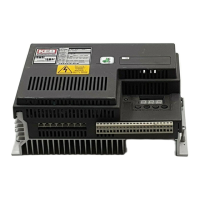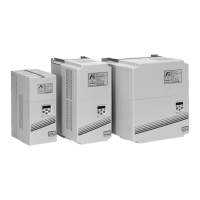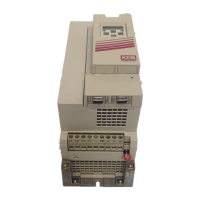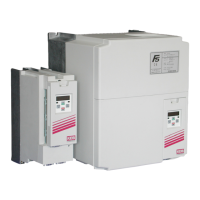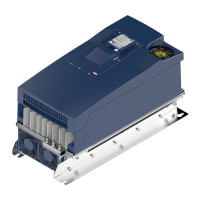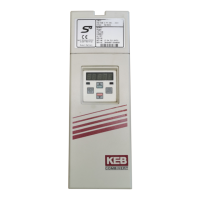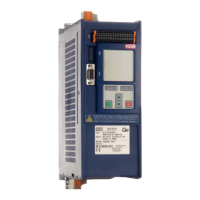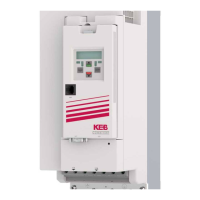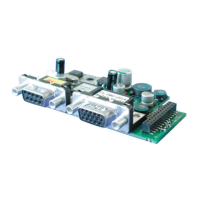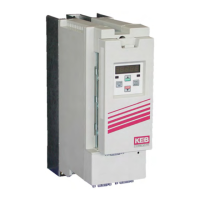16
General
Installation of a line choke is recommended and can be used prevent nuisance
errors and protection caused by voltage spikes. Additionally, the use of a line
choke will double the operational lifetime of the DC bus capacitors in the unit.
1.5.6 Motor Thermal Protection
The F5 series inverters are UL approved as a solid state motor overload
protection device. It is necessary to adjust the current trip level in parameter LF.9
or LF.12. The function assumes the use of a non-ventilated motor. The function
meets the requirements set forth in VDE 0660 Part 104, UL508C section 42,
NFPA 70 Article 430 part C. See the description for parameter LF.9 for the trip
characteristics.
A motor winding sensor can also be used for additional safety and the highest
level of protection. Either a normally closed contact (rating: 15V / 6mA) or a
PTC (positive temperature coefficient) resistor can be connected to the T1, T2
terminals on the inverter. The thermal device should be connected as indicated
in Section 2.5.
1.5.7 Motor Cable Length
In some conventional installations and many MRL applications, the motor can
be a considerable distance (greater then 40 feet) from the elevator drive. Under
these circumstances the long cable length can cause high voltage peaks or high
dv/dt (rate of voltage rise) on the motor windings. Depending on the design of
the motor, these can lead to damage of the motor winding. Therefore, in these
installations use of a special dv/dt lter is highly recommended.
The standard approved solution is a special output choke. The choke is designed
to be used with a maximum of 16kHz switching frequency and low inductance so
it does not drastically in uence the motor's equivalent circuit model.
There are three sizes available for motors rated up to 100A. The part numbers
and current ratings are listed below.
Part Number Rated Current
15Z1F04-1005 22A
17Z1F04-1005 42A
21Z1F04-1005 100A
The use of a conventional line or motor choke on the output of the drive is not
recommend since the inductance value is high enough that it would distort the
values in the motor model and result in poor control of the motor.
